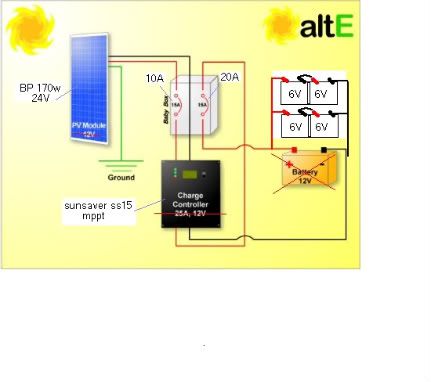good info Amy,
soo many products, each with their own quirks.
agree it's "officially" too small..no danger though, perhaps limits itself on occasion and we lose a bit of power. never could do this with a 12v nominal module as it could overload the inverter input. output on this one is self protected.
from manual:
4.5 Protections
Solar Overload
(No LED indication) The SunSaver MPPT will limit battery
current to the 15 Amp maximum rating. An over-sized
solar array will not operate at peak power. The solar array
should be less than the SS-MPPT nominal max. input power
rating for optimal performance. See Section 7.0 Technical
Specifications for more information.
cheers, dave
edit: "overload the inverter input" should read "overload the controller input"

some more good info:->
http://us.pv-contractor.com/us_store/index.php/us_us/aitdownloadablefiles/download/aitfile/aitfile_id/4574/"It is important to note that exceeding the maximum array wattage for a given controller/
nominal voltage combination will not damage the controller. Any wattage in excess of the max array
wattage will simply be lost. (i.e. Using a 300W array in a system where the max array W is only 200W
will not damage the controller, but the 300W array will effectively act like a 200W array and 100W of
power will be lost.)
IMPORTANT: MPPT controllers can be used with off‐grid or on‐grid modules. PWM controllers should
only be used with off‐grid modules.
Maximizing Efficiency
Morningstar TrakStar™ MPPT controllers will operate at slightly different efficiencies depending
upon the nominal battery voltage being used, the Vmp of the array, and the total wattage of the array.
These efficiency curves are printed in the appropriate manual for every Morningstar MPPT controller.
This data can be used to optimally size your solar array for best performance and maximum energy
harvest."








 ..there are some notes there about them being current limited (only draw what they need to operate) and being powered up continuously is one of the normal modes of operation.
..there are some notes there about them being current limited (only draw what they need to operate) and being powered up continuously is one of the normal modes of operation.


